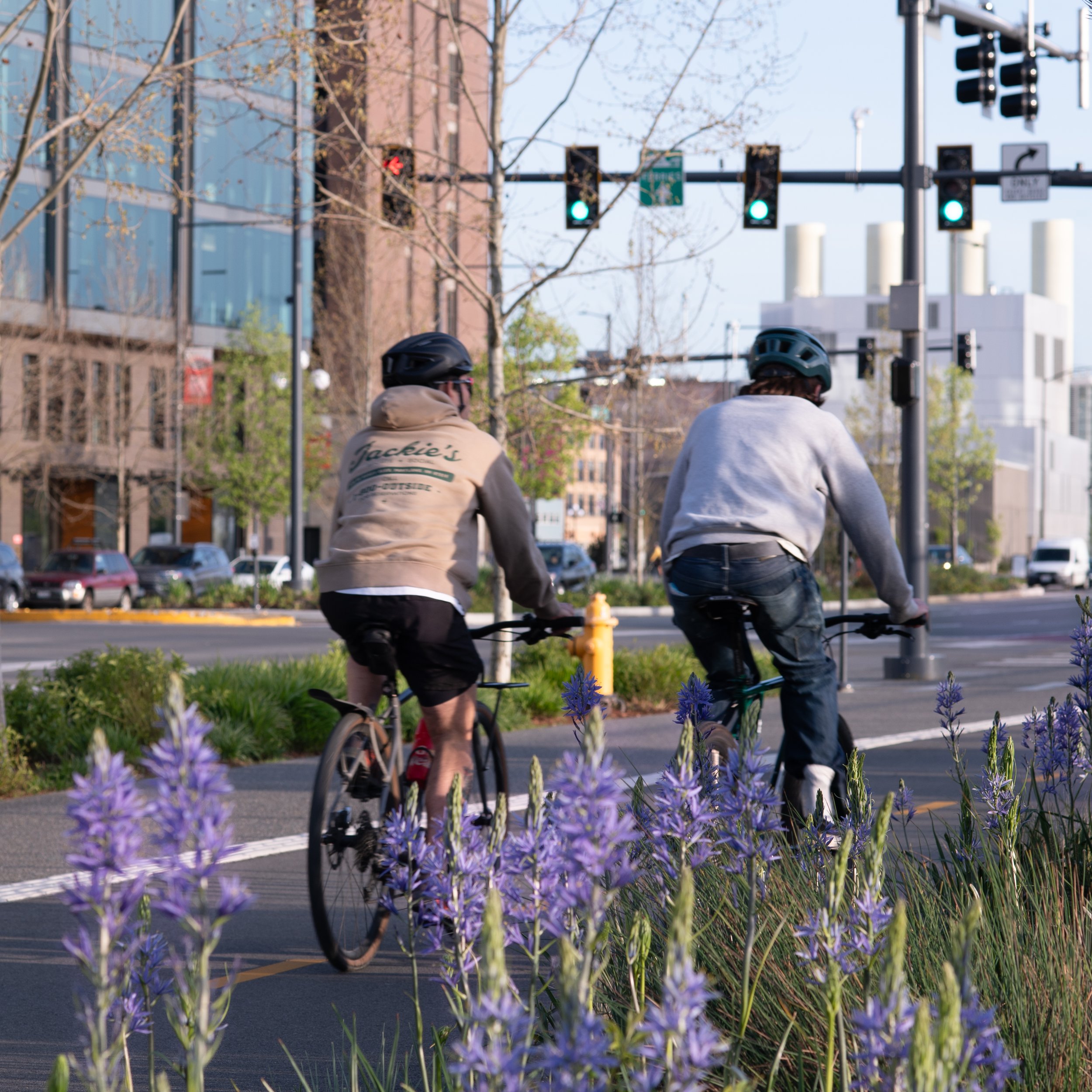Camassia leichtlinii ‘Caerulea’ – Camas
Every year, I look for the Camas flower as it follows the daffodils and overlaps with the tulips. The camas plant in full bloom is extraordinary and impactful. Besides my own monitoring and anticipation of its bloom, I know when it has bloomed as I hear from others in my circle of friends asking me, “what is that amazing blue flower, I just saw!”
This gorgeous mid-spring bloom, also known as the Camas lily or Wild Hyacinth, is in the Asparagus family, Asparagaceae. If you see it, as it first emerges from the cluster of erect grass like leaves, you will see it looks just like an asparagus spear. Camassia has a long ethnobotanical history and the bulb was an important food source. It was gathered from once immense camas prairies and marshes and then pit-roasted or boiled, where it was used as a syrup, eaten like a sweet potato, or pounded into a flour and used as a thickener for baking.
Land Morphology, has planted a variety of the Camas leichtlinii, en masse down the central median of the Seattle Waterfront project at its southern entry and along the edges of Dzidzilalich, the renamed Alaska Way. “Dzidzilalich” means little crossing-over place” in the Salishan language. It is striking, to enter the waterfront project from the south for visitors and residents alike. This entry gateway is alive with the blue of the camas which stretches on and on for several blocks. In addition to its beauty, this plant grounds a large portion of this great public project in the indigenous cultural and botanical history unique to the Pacific Northwest.



